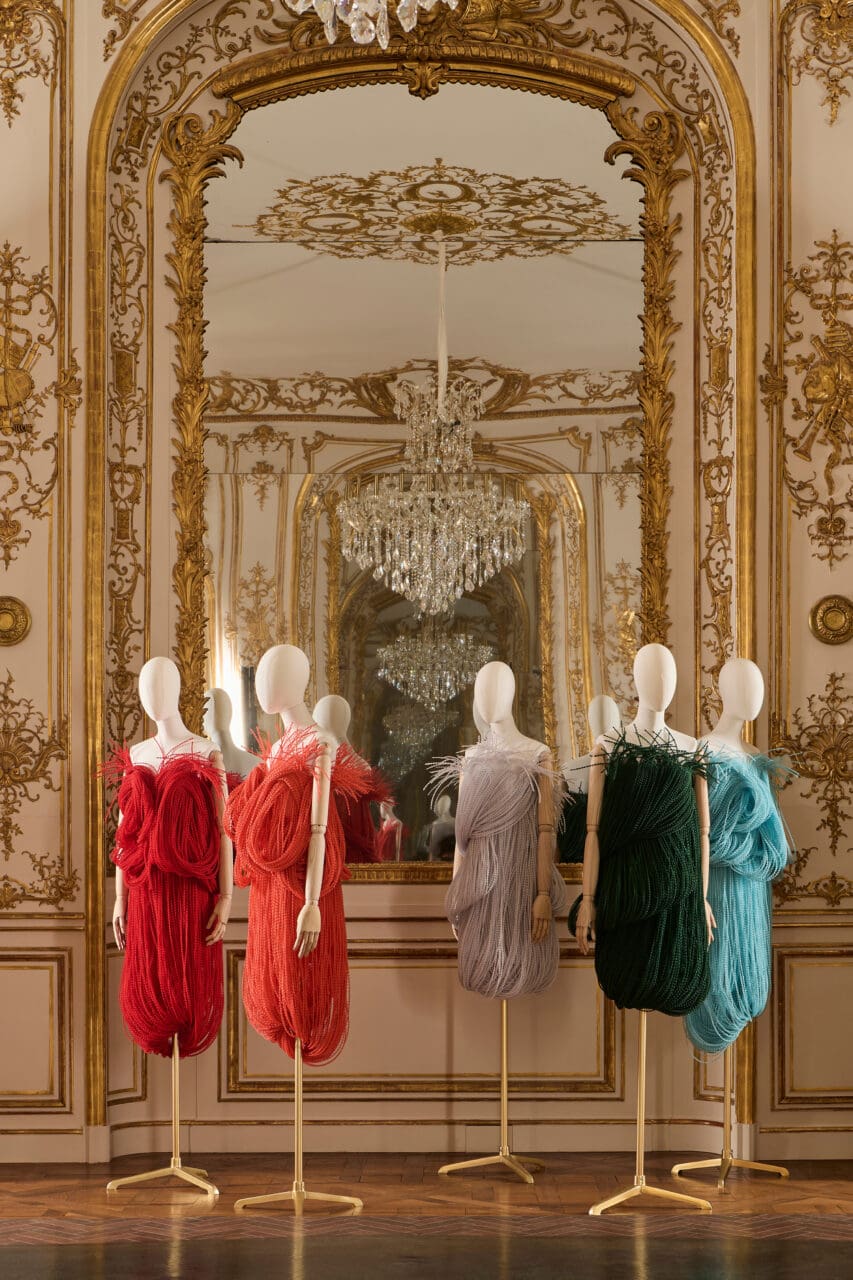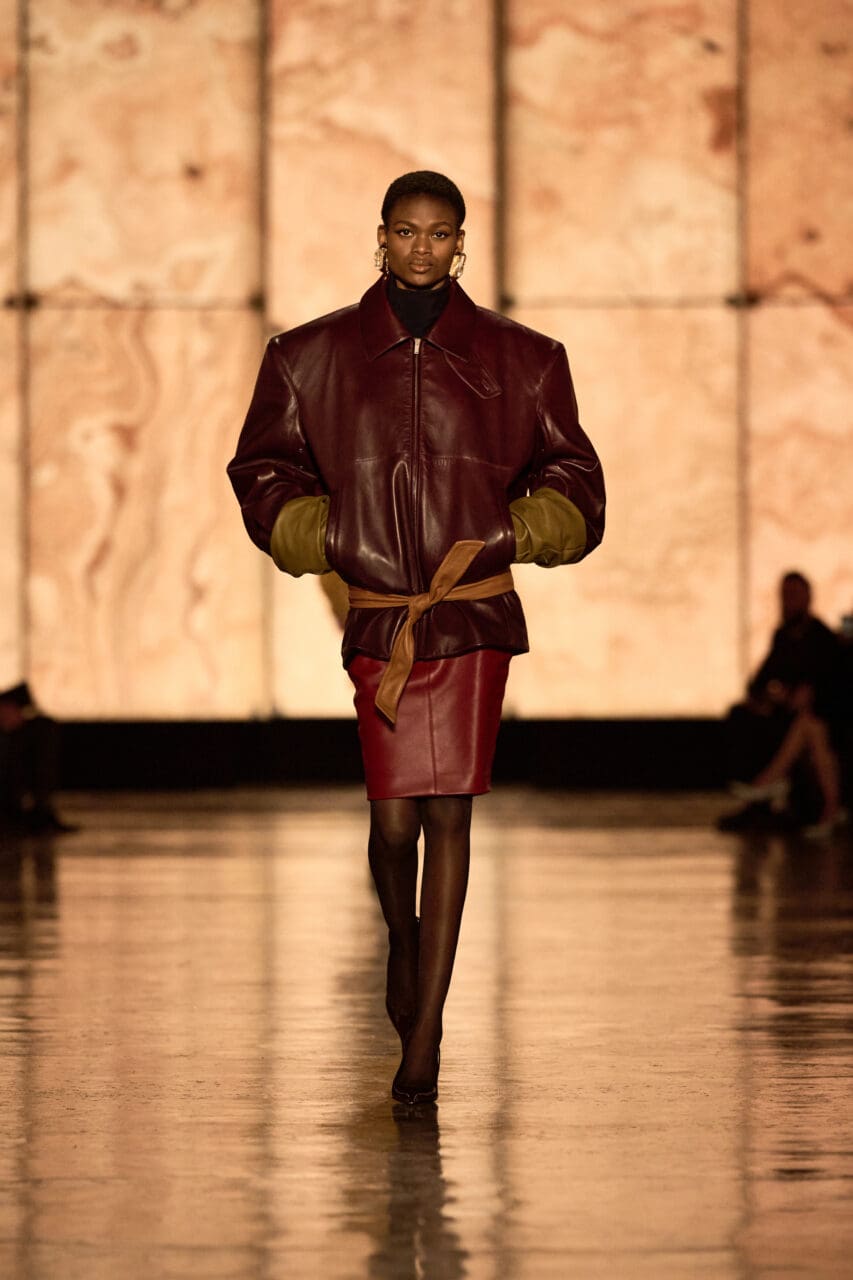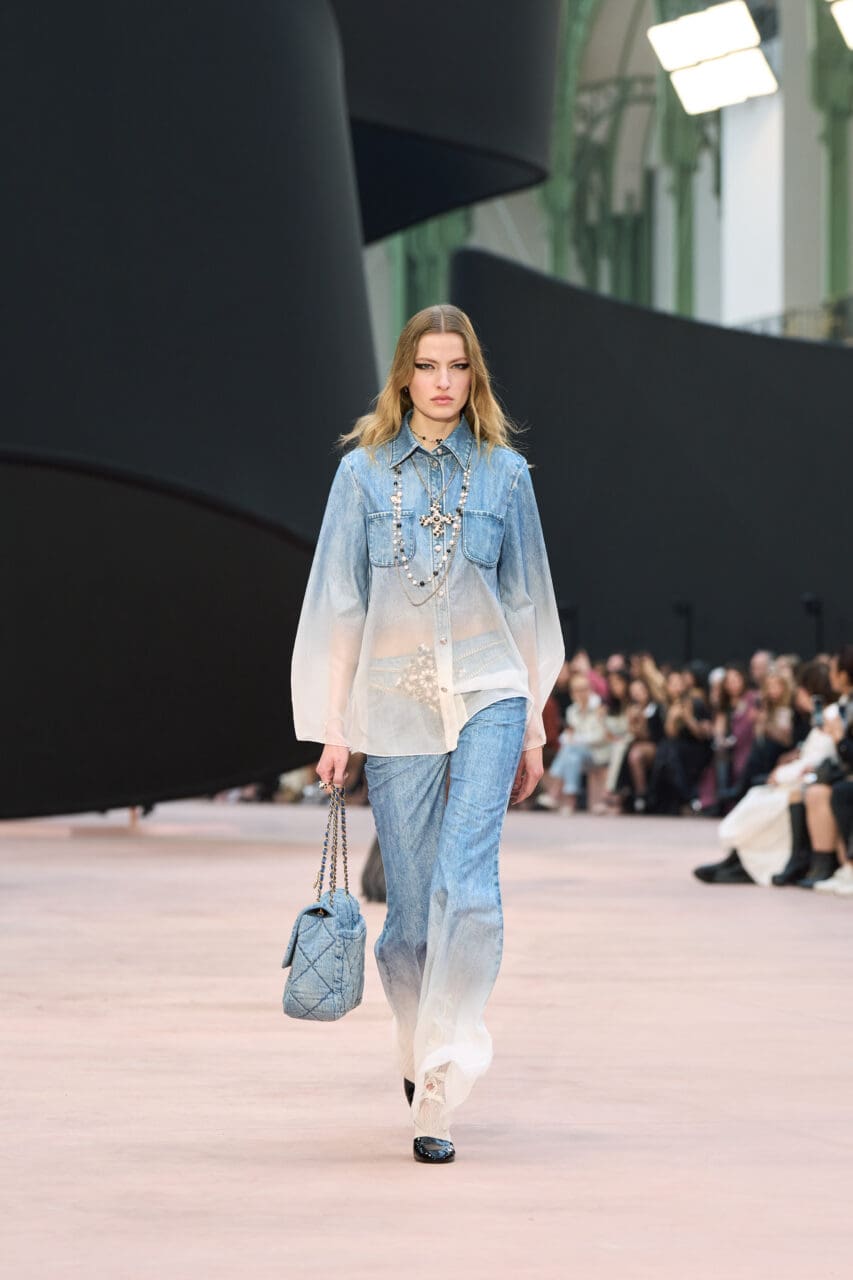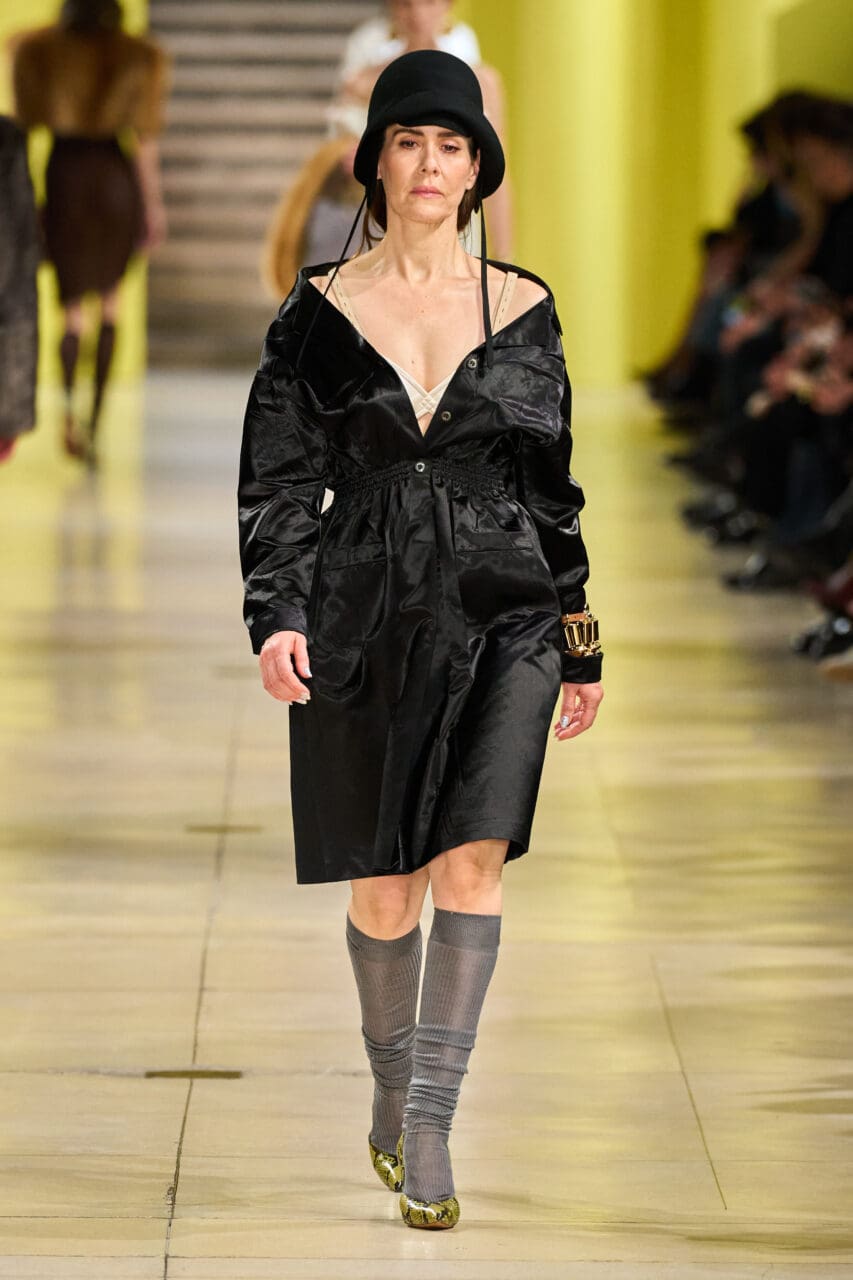What strange emotions the skirl of the bagpipes can evoke. (Skirl, for the non-Scots among us, is that haunting/headache-inducing wail that they make.) With their ever so mournful and wistful lamenting sound, bagpipes are like the Bjork of the musical instrument world: otherworldly and totally opinion dividing. Maria Grazia Chiuri opened and closed her Dior resort show, held in the ordered and verdant splendor of the gardens of Drummond Castle in Scotland, with the pipes. And this Scot, who never gets misty eyed at the slightest strain of them, found himself surprisingly and rather deeply moved. (But I’m not so equivocal about Bjork: Love, love, love her.)
It’s likely that wasn’t the only emotion that was evoked by Chiuri’s exceptional collection, which intertwined the history of the house of Dior with the romantic, dramatic, and sometimes frankly bloody history of Scotland to terrific effect. Desire is the emotion I’m thinking of here, because this was one of those Chiuri outings suffused with what she does best: clothes which are defined by a deep rooted sense of realism but which also simultaneously transcend it. (Total side note here, but her resort shows also allow for a little empirical research on how women actually look in her clothing, the real litmus test of a brand, and the Chiuri-ites looked so right—as in grown-up and effortless and cool—in their hourglass jackets, and full skirts, and clumpy boots or beribboned slingbacks, regardless of age, or physique, or for that matter, attitude.)
Chiuri set herself to work with everything sartorially associated with the country. “Scotland is an important reference in the fashion world,” she said at a preview the day before the show, “and I wanted to interpret it in a different way. For my generation, it’s so associated with punk, but there is another way to go into it, and that’s through the textiles. In fashion we concentrate so much on shape: But textiles are a big part of our job—what you can do with them, and the changes you can make through them.” So, Chiuri went to the traditional—the tartan and cashmeres, the tweeds and the Argyles—and deftly filtered them into a collection which variously drew on the geopolitics of fabrics, Mary Stuart (aka Mary Queen of Scots) and the way she gave political commentary through her embroideries, and yes, of course, vive le punk, so that it rocked with a defiant beauty—and an equally defiant energy. It felt uncompromising. But then maybe women can’t afford to be anything but that, especially now.
What all this meant was that the house classic bar jackets were cut from heathery plaid shawls. Corsets had a tough, armorial feel. Embroideries of flowers scrolled over bodices. Black Jacobean velvet was used for evening dresses, including a knockout one where white lace encased the neck and shrouded the décolleté. And there was yet more lace, in gunmetal and gold, panelled and patched together into dresses, the seams rippling with tiny lines of ruffles. All of this came accessorized with pearls suspended from leather chokers, studded and quilted leather crossbody bags, and casually unzipped biker boots and leather wading gators, a reminder that Chiuri makes boots like no other.
As with her previous resort outings—to Mexico, or Spain, or Morocco—she chose to collaborate with local designers and artisans: tweeds and cashmere from Johnstons of Elgin; more knitwear from Esk Cashmere; ceremonial headwear by Robert Mackie; and that doughtiest of fabrics, Harris tweed. (Chiuri travelled to its source, the Outer Hebrides, to meet the weavers who make it from their homes, and, major props to her here, went there in freezing, wind lashed November.) She also collaborated on one look with Samantha McCoach of Le Kilt, which Sarah Mower wrote about here.
The trawl of the travel, the expansiveness of the thinking, the intense research (standing over this collection were the writings of the Scottish cultural historian and artist Clare Hunter), and the almost anthropological sense of how she works on the resort—all showcase Chiuri’s desire to go that bit further and deeper, to look for the meaning of what she’s doing and why she is doing it. “We tend to think of fashion only as being about brands these days,” she said. “But fashion isn’t just brands.”
Still, everything starts with Dior, and how the house historically navigated the world. In this instance, images taken from a charity fashion show that Monsieur Dior held in the grey pallor of postwar 1950s Scotland proved to be her starting point. Yet typical of Chiuri, what appealed to her wasn’t the hauteur and formality of the show, but the reportage images of what came after: the models relaxed and free, partying with the locals in their evening dresses and ceremonial kilts. The clash of the dream with the everyday—and how that’s always the best.
Looking at shows as they were then might have also gotten her thinking about shows now—and fashion today. While her Scottish tribute resort was shot with her usual realism, there was also more theatricality and flourish than in collections past; an acknowledgement that fashion needs its three-dimensionality—literal and metaphorical—like never before. That you have to really ramp up what you’re saying. And this collection said a lot. You could even hear it over the skirl of those pipes.
Editor
Mark HolgateCredit
Lead Image: Alessandro Lucioni / Gorunway.com





